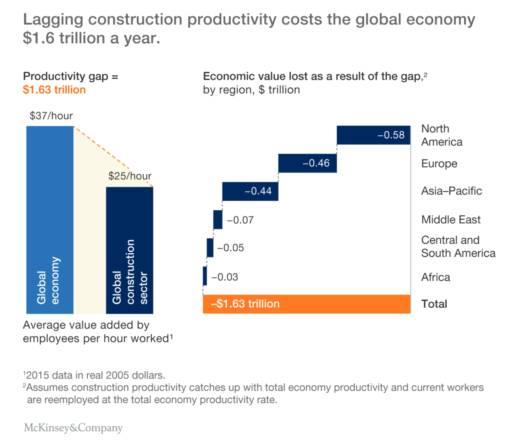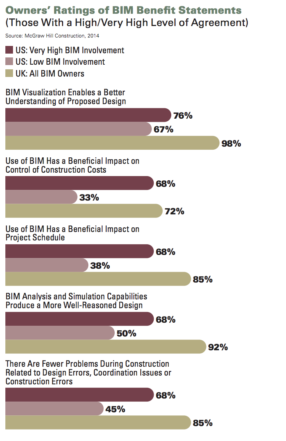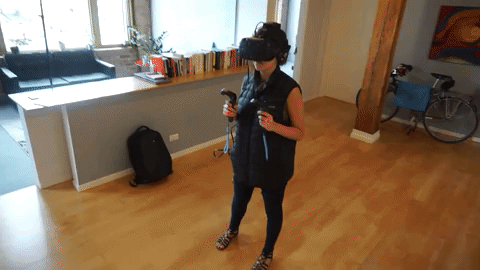Danielle Dy Buncio, CEO and Founder of VIATechnik, is a regular BuiltWorlds contributor.
 We invite experts and thought leaders to share their knowledge on topics related to innovation in the built environment. Information on each contributor can be found at the bottom of each article. Learn more about our contributor program here.
We invite experts and thought leaders to share their knowledge on topics related to innovation in the built environment. Information on each contributor can be found at the bottom of each article. Learn more about our contributor program here.
Throughout history, a new technology’s impact has largely been dependent on a diminishing barrier to entry over time — both from a consumer and industry perspective. For example, in the early days of mobile technology, costs were simply too high for widespread adoption. Back in 1982, the two-pound, foot-long Motorola DynaTAC 8000X made its debut at a ludicrously untenable price point: $3,995 (equivalent to $10,286 today). It also had limited functionality, boasting an approximate one-hour battery life and the ability to store up to 30 phone numbers.

Of course, prices fell and adoption increased, which led to innovation on the hardware side. The culmination of that innovation, Apple’s iPhone, debuted in 2007 at a relatively reasonable $499. It was an overwhelming success. The only problem was that the software was still miles behind the hardware in terms of its maturity and accessibility. When the Apple’s App Store debuted in July of 2008 (alongside the new-and-improved iPhone 3G), there were only 500 apps available for download. This lack of variety was, in large part, due to the overwhelming costs of mobile app development.
A decade ago, the options were limited. Apps were typically custom-built by teams of developers and, depending on their complexity, would require anywhere from a several to hundreds of thousands of dollars to create. Fast-forward to today: there are dozens of services that allow users to build their own mobile apps for a fraction of that cost — many for under $10. This isn’t to say that people don’t still spend thousands — even millions — on premium app development; however, it’s the improved functionality, quality and, accessibility of basic development platforms and tools that have ultimately spawned close to seven million apps — and 2.32 billion smartphone users worldwide.
Virtual reality (VR) and augmented reality (AR) technologies are still in their infancy, but their potential impact is significant, especially in an industrial context. In particular, the AEC industry is ripe for VR and AR disruption — but the speed at which the technologies need to advance and the costs need to go down must accelerate if we want to see widespread adoption in the near future.

It’s Time for a Change
Right now, construction is in the midst of an ongoing crisis: labor productivity has been stagnant and potentially declining over the past decades. Clearly, continuing on with a business-as-usual approach is no longer an option.
VR, AR, and related technologies, such as building information modeling (BIM), will likely be the solution to the industry’s problems.

They have the capacity to improve design visualization and presentation, reduce project risk and waste, speed up project timelines, and more, which will undoubtedly increase project efficiency and ROI. The figure below highlights some of the key benefits of BIM, according to owners who have utilized the technology in the U.K. and the U.S.
The value is clear and tangible, but in order to secure industry buy-in on a wide scale and realize their full potential, these technologies need to become more accessible and practical in an AEC context.
Room for Improvement
So what can we do to improve the technology’s efficacy in AEC processes? First and foremost, advancements in hardware are needed. On the VR side, for example, wireless headsets would be a huge step in the right direction. During the design and conceptualization stage, being free to explore a virtual building or space in real time is a crucial part of the experience. This opens the door for data-driven design and better decision-making, not to mention a more compelling pitch for architects trying to win a new project. We’ve started using wireless VR on all of our projects, and we encourage others to do the same!
Perception is another big issue that’s getting in the way of widespread AEC adoption. Right now, everyone’s primary point of reference in terms of setting standards and expectations for VR are the gaming and entertainment industries. However, blockbuster movies and video games typically have multi-million dollar budgets. Most video games have teams of 20+ programmers working for at least one or more years on production. For them, this is feasible, because they’ll be selling millions of copies for $50 or more each. The AEC industry typically operates on a tighter timeline, and of course, can only sell the VR experience once.

Realizing AR’s Massive Potential
On the AR side, we need to improve existing technologies in a number of ways. For example, if we want the headsets to be utilized as practical jobsite tools, we need to improve their ability to make virtual objects or holograms visible in light or sunny conditions.
There also needs to be an increased focus on safety. To date, we’ve seen most of the focus on the actual design of the hardware, such as integrating headsets with a hard hat or ensuring that the glasses are ANSI Z87.1-rated. Daqri has been the leading contender in this area.
These considerations are, of course, crucial, but the biggest issue regarding safety when it comes to utilizing AR in the field is that the technology itself is inherently distracting. Remember all of the accidents and injuries during last summer’s Pokémon Go craze?
AR’s early success in the manufacturing industry (case in point: Daqri) is not necessarily indicative of correlative success in construction — at least not in its current form. Manufacturing takes place in a fairly controlled environment. But in construction, for example, you could be laying the metal deck one day, and the next day, that same metal deck could have a number of new holes cut for various MEP penetrations. If an AR hologram distracts you or obstructs those holes from your view, it could result in a life-threatening situation.
In my conversations with people throughout the industry, it seems that everyone is much more excited about the “AR revolution” than VR tech. The reality is that while it’s certainly poised to make a big impact, AR hardware is still very much in beta or pilot mode. That said, AEC firms need to be testing the technology and proving its value now so when it does come of age, we’re ready to capitalize on it. And considering the growing interest and investment in AR tech by major companies like Apple, Microsoft, and Facebook, it seems as though that moment is going to arrive sooner rather than later.
Potential Solutions
The key to speeding up adoption will be integrating these technologies with platforms and devices we already use. From a hardware perspective, that means our smartphones, monitors, and tablets. On the software side, it means making it easier to integrate AR and VR devices with the software modeling programs we currently use. Tools like Iris and Fuzor are already attempting to do this, but in order to get the visual quality of something like Unreal from a 3D modeling tool, there are still a number of complex steps involved.
On a more fundamental level, here are three areas that will need to be addressed if we want to increase AR and VR tech adoption and harness its full potential:
- Attract Talent: Fostering innovation and speeding the technology’s maturity curve will require skilled engineers in AEC firms. Unsurprisingly, most of the best graduates get scooped up by software firms like Apple and Google. As an industry, we need to figure out how to more effectively convey our employer value proposition in order to attract top talent, or invest in training programs.
- Prove the ROI: Like any new technology or strategy, we need to effectively convey the value of this technology from a cost-savings perspective. That means ensuring we’re tracking the impact of VR, AR, and related technologies, then communicating that value in terms that everyone can understand.
- Reduce Costs: On an even more fundamental level, we need to reduce baseline costs of AR and VR to make them more accessible. HoloLens headsets are $3,000 to $5,000 a piece, and still have a long way to go in terms of reaching their full potential.
The precedent set by mobile development and adoption suggests that VR and AR will eventually become more accessible over time, but the AEC community needs a solution sooner rather than later. We need to ensure we’re doing everything we can to foster widespread adoption in order to speed up these technologies’ maturity curves. The future of our industry depends on it!




Discussion
Be the first to leave a comment.
You must be a member of the BuiltWorlds community to join the discussion.